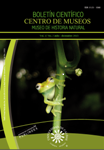Authors
Abstract
Production, accumulation, and decomposition of leaf litter constitute an important entry route for nutrient cycling in ecosystems, but deforestation and soil productive exploitation can affect them. This study evaluated the dynamics of leaf litter in an Andean rural livestock landscape where, since 2003, restoration took place in four biological corridors connecting two forest fragments. The study comprised three periods and 11 sites classified into four types of vegetation cover: (1) forest; (2) pasture; (3) restored areas from pastures (RA-pasture); (4) restored areas from harvested pine and cypress forest plantations (RA-forestry). Methods involved 63 leaf litter collecting traps; 288 mulch samples; 192 decomposition bags, and five environmental variables measured. The environmental conditions of the RAs were similar to those of the forest and differed from that of the pasture. Production was highest in the forest. Accumulation in forests was similar to RA-forestry, but different to that of the pastures and RA-pasture. Decomposition was rapid (> 70% at 45 days) and greater in the RAs than in forests and pastures. Recovery of recycling processes is still far from reaching complete restoration, with RA-forestry being closest. Physical factors (precipitation, gravity) seem to play an important role in the dynamics in all the vegetation covers of this mountainous landscape.
References
BRAY, J.R. & GORHAM, E., 1964. Litter production in forest of the world. Advances in Ecological Research, 2: 101-157.
BROWN, S. & LUGO, A.E., 1990. Tropical secondary forests. Journal of Tropical Ecology, 6: 1-32.
CLARK, D.A., BROWN, S., KICKLIGHTER, D.W., CHAMBERS, J.Q., THOMLINSON, J.R., NI, J. & HOLLAND, E.A., 2001. Net primary production in tropical forest: An evaluation and synthesis of existing field data. Ecological Applications, 11: 371-384.
ETTER, A. & WYNGAARDEN, W.VAN., 2000. Patterns of landscape transformation in Colombia, with emphasis in the Andean region. Ambio, 29: 432-439.
GÁLVEZ, J., 2002. La restauración ecológica: conceptos y aplicaciones. Revisión bibliográfica. Universidad Rafael Landívar, Facultad de Ciencias Ambientales y Agrícolas. Instituto de Agricultura, Recursos Naturales y Ambiente. Serie de Documentos Técnicos No. 8. 21p.
HENEGHAN, L., COLEMAN, D.C., ZOUB, X., CROSSLEY, D.A. & HAINES, B.L., 1998. Soil micro arthropod community structure and litter decomposition dynamics: a study of tropical and temperate sites. Applied Soil Ecology, 9: 33-38.
IDEAM, 2011. Registros medios mensuales multianuales de precipitación. Estación Salento. Instituto de Hidrología, Meteorología y Estudios Ambientales, Bogotá D.C., Colombia.
ILANGOVAN, M. & PALIWAL, K., 1996. Changes in mass and nutrient during decomposition of Leucaena leucocephala and Cymbopogon citrates and the effect of substrate quality. Weather variables on mass loss during decomposition in a semi-arid ecosystem, Madurai, India. Journal of Tropical Forest Science, 8: 317-332.
JORDAN, C.F., 1983. Productivity of tropical rain forest ecosystems and the implications for their use as future wood and energy sources: 117-135 (in) GOLLEY, F.B. (ed.) Ecosystems of the World, Vol. 14A, Tropical Rain Forest Ecosystems: Structure and Function. Elsevier, Amsterdam, Netherlands.
KATTÁN, G. & NARANJO, G., 2007. Regiones biodiversas: herramientas para la planificación de sistemas regionales de áreas protegidas. Fundación EcoAndina WCS/WWF, Bogotá D.C., Colombia.
LAVELLE, P., BLANCHART, E., MARTIN, A. & MARTIN, S., 1993. A hierarchical model for decomposition in terrestrial ecosystems: application to soils of the humid tropics. Biotropica, 25: 130-150.
LEBRET, M., NYS, C. & FORGEARD, N., 2001. Litter production in an Atlantic beech (Fagus sylvatica L.) time sequence. Annuals of Forest Science, 58: 755-768.
MURGUEITIO, E., CALLE, Z., URIBE, A. & SOLORIO, B., 2011. Native trees and shrubs for the productive rehabilitation of tropical cattle ranching lands. Forest Ecology and Management, 261: 1654-1663.
PRESCOTT, C., 2005. Do rates of litter decomposition tell us anything we really need to know?. Forest Ecology and Management, 220: 66-74.
PROCTOR, J., 1983. Tropical forest litter fall. I. Problems of data comparison: 267-273 (in) SUTTON, S.L., WHITMORE, T.C. & CHADWICK, A.C. (eds.) Tropical rain forest: ecology and management. Blackwell Scientific Publications, Oxford, U.K.
RAI, S.N. & PROCTOR, J., 1986. Ecological studies on four rainforests in Karnataka, India. II. Litterfall. Journal of Ecology, 74: 455-463.
RAVE, S., MONTENEGRO, M. & MOLINA, L. J., 2013. Caída y descomposición de hojarasca de Juglans neotropica Diels (1906) (juglandaceae) en un bosque montano andino, Pijao (Quindío), Colombia. Actualidades biológicas, 35: 33-43.
RODRÍGUEZ, N., ARMENTERAS, D., MORALES, M. & ROMERO, M., 2004. Ecosistemas de los Andes Colombianos. Instituto de Investigación de los Recursos Biológicos "Alexander von Humboldt", Bogotá D.C., Colombia.
SEASTEDT, T.R. & CROSSLEY, D.A., 1983. Nutrients in forest litter treated with naphthalene and simulated through fall: a field microcosm study. Soil Biology and Biochemistry, 15: 159-165.
SUNDARAPANDIAN, S.M. & SWAMY, P.S., 1999. Litter production and leaf-litter decomposition of selected tree species in tropical forests at Kodayar in the Western Ghats, India Forest. Ecology and Management, 123: 231-244.
TAKEDA, H., 1996. Templates for the organization of soil animal communities in tropical forest: 127-226 (in) TURNER, I.M., DIONS, C.H., LIM, S.S. & NG, P.K.L. (eds.) Biodiversity and the dynamics of ecosystems. National University of Singapore, Singapore.
VARELA, A., CORTÉS, C. & COTES, C., 2007. Cambios en edafofauna asociada a descomposición de hojarasca en un bosque nublado. Revista Colombiana de Entomología, 33: 45-53.
VARGAS, A., LOZANO, F.H., VARGAS, W., ARISTIZÁBAL, S., MENDOZA, E. & CAYCEDO, D.P., 2009. Seguimiento y evaluación de la estrategia de conservación en el paisaje rural (Fase IV): 161-177 (en) LOZANO-ZAMBRANO, F.H. (ed.) Herramientas de manejo para la conservación de biodiversidad en paisajes rurales. Instituto de Investigación de Recursos Biológicos "Alexander von Humboldt" y Corporación Autónoma Regional de Cundinamarca (CAR), Bogotá D.C., Colombia.
VENEKLAAS, E.J., 1991. Litterfall and nutrient fluxes in two montane tropical rain forests, Colombia. Journal of Tropical Ecology, 7: 319-336.
ZAR, J.H., 1999. Biostatistical analysis. Prentice Hall, New Jersey, USA.

 PDF
PDF
 FLIP
FLIP


















